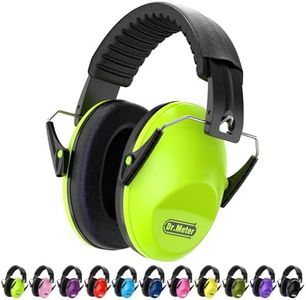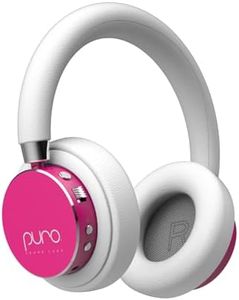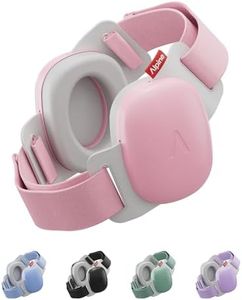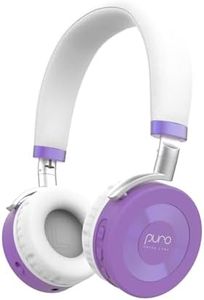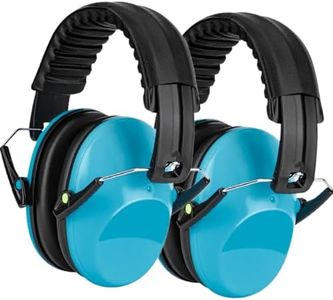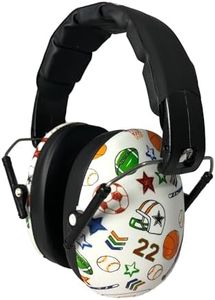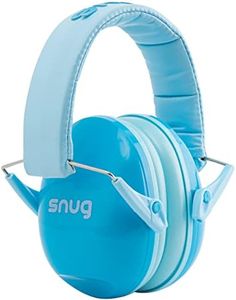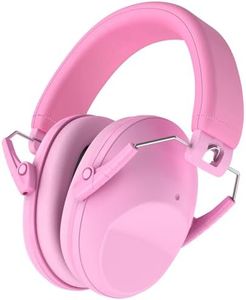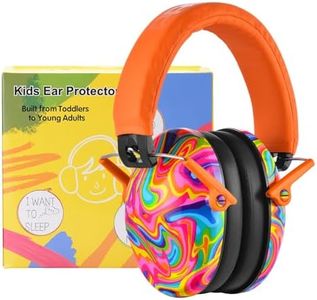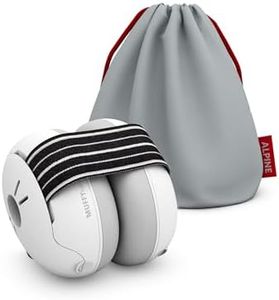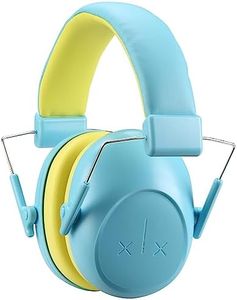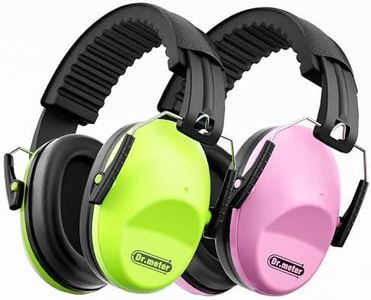We Use CookiesWe use cookies to enhance the security, performance,
functionality and for analytical and promotional activities. By continuing to browse this site you
are agreeing to our privacy policy
10 Best Kids Ear Protection
From leading brands and best sellers available on the web.Buying Guide for the Best Kids Ear Protection
Choosing the right ear protection for kids is important to ensure their hearing stays safe during loud events or environments, such as concerts, sporting events, fireworks displays, or even while traveling. The comfort, fit, and level of protection should match both the child’s age and the situation. By understanding how product specs relate to your child’s needs, you can make a decision that offers safety without sacrificing comfort or usability.Noise Reduction Rating (NRR)Noise Reduction Rating, or NRR, tells you how much sound the ear protection can block out, usually measured in decibels (dB). A higher number means more protection from loud noise. Values typically range from around 15dB to 30dB. Lower NRR (15-20dB) is good for mild noise or short exposure, while higher NRR (25-30dB) is better for very loud environments. Choose a higher NRR for events like concerts or car races, but for everyday use or environments where you still want the child to hear some sound (like classrooms), a lower NRR is sufficient.
Fit and AdjustabilityFit and adjustability refer to how well the ear protection sits on your child’s head and whether it can be resized as they grow. A good fit ensures comfort and effective noise blocking. Ear muffs often have adjustable headbands, while earplugs come in various sizes. Check if the product is labeled for children, as adult sizes may not seal properly. Look for flexible, padded bands and cushions. If your child is younger or still growing fast, opt for models with a lot of adjustability so there’s room to grow.
Comfort and MaterialsComfort is all about how the ear protection feels when worn for long periods. Softer, hypoallergenic materials are less likely to irritate sensitive skin. Choose lightweight options with cushioned ear pads or soft foam tips. For kids who may wear ear protection for several hours, prioritize breathable materials and extra padding, since discomfort might make them reluctant to use the protection.
Weight and SizeWeight and size determine how easy it is for a child to wear and carry their ear protection. Lighter, smaller models are better for younger kids, since heavy or bulky products may slip off or become uncomfortable. For toddlers or preschoolers, small and lightweight designs work best. Older children can usually handle slightly larger or heavier options if they provide a better seal.
Type: Ear Muffs vs. Ear PlugsThere are two main types: ear muffs and ear plugs. Ear muffs cover the entire ear, providing even protection and being harder to lose, suitable for very young kids or those who don’t like things inside their ears. Ear plugs are inserted into the ear canal, offering a more discreet look and are better for short-term use or older children comfortable with insertion. Consider your child’s preferences and age when choosing the type: ear muffs are generally more comfortable and easy to use for most kids.
Durability and Ease of CleaningDurability measures how well the ear protection stands up to rough handling. Kids are active, so look for sturdy, flexible materials that won’t break easily. Ear protection should also be easy to clean, especially with frequent use. Choose products with removable, washable pads or surfaces that can be wiped clean. If your child will use the protection outdoors or in messy environments, ease of cleaning becomes even more important.
